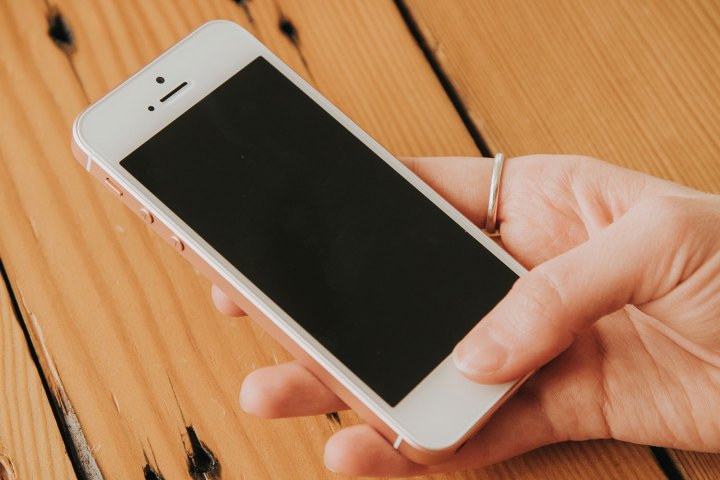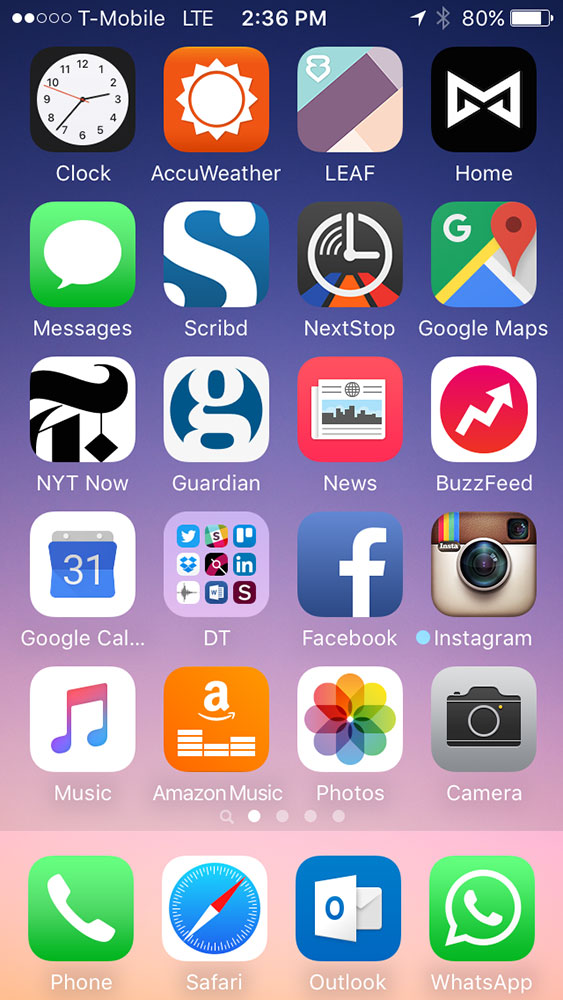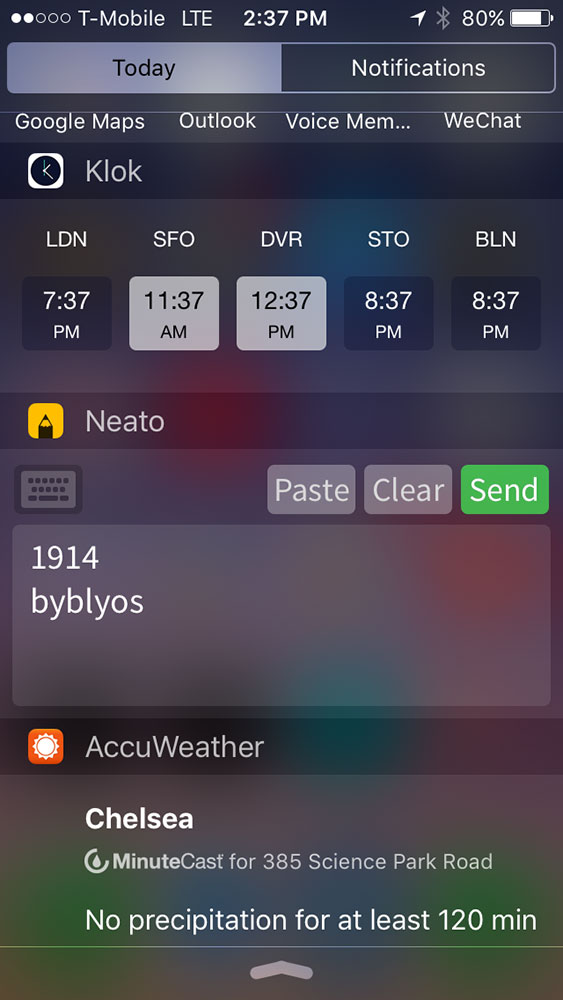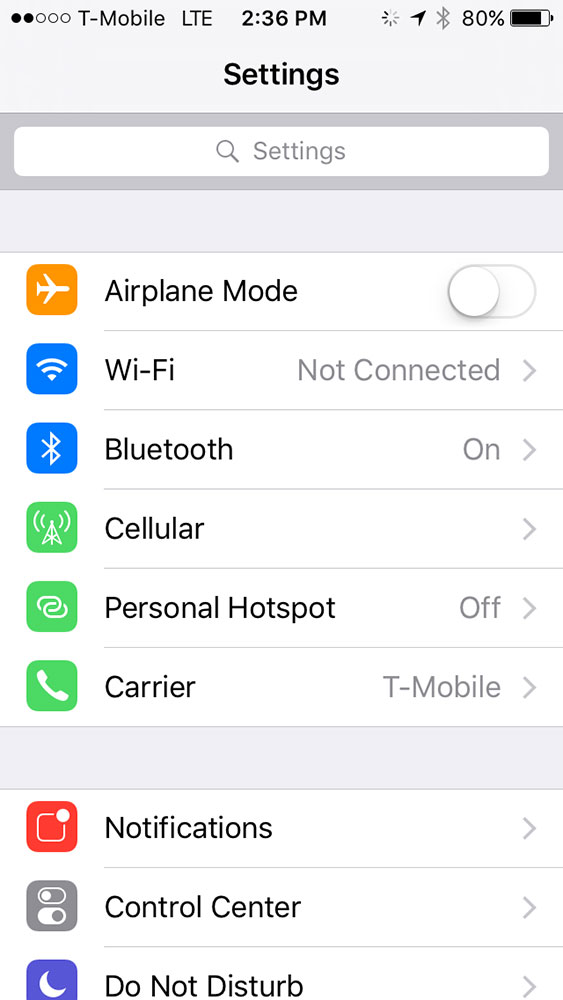- Just as powerful as the iPhone 6S
- Cheap for the specs
- Superb camera
- Cute, retro design
- Easy to hold and use one-handed
- 4-inch screen is really small
- Must pay extra $100 to get enough storage
- Selfie camera is low resolution
In the not-so-distant past, 4-inch smartphones were the norm, and 5.3-inch devices like the original Samsung Galaxy Note were laughably huge. Early adopters of phablets often heard iPhone-using friends scoff, “Why would you want a phone like that?”
Oh, how the tables have turned. Fast forward to 2016, and 4-inch smartphones are rarer than unicorns. No major smartphone maker (except Sony) even considers making a high-end phone that’s less than 5 inches big – until now. Apple is back to its old tricks with the retro 4-inch iPhone SE.
If you’re one of those people who refused to buy an iPhone 6 or 6S on the grounds that its 4.7-inch screen was “just too big,” the iPhone SE is the phone you’ve been waiting for since 2013. It’s small and powerful — just like Mighty Mouse.
These are our initial hands-on impressions of the iPhone SE. We’ll update this review regularly, as we use the 4-inch iPhone daily.
It’s a baby phone!
If you’ve been carrying a phablet for the last year or more, coming back down to a 4-inch screen feels absolutely bizarre. So skip ahead if you already use a 4-inch iPhone; this is for phablet users wondering if they can rewind time.
You have to relearn how to hold and use a smaller smartphone. It takes two hands to hold the iPhone 6S Plus comfortably, lest you sprain your thumb trying desperately to reach the back button in the upper left-hand corner. Not so with the iPhone SE. If you place it in two hands instead of one, it looks like you’re cradling a precious baby phone. You have to grab the 4-inch phone one-handed to look like a normal person casually using a smartphone.
It’s a truly pocketable phone that you can use one-handed.
Of course, there are disadvantages to the smaller size. Typing on the default iOS keyboard is nearly impossible. My thumbs felt huge! Download SwiftKey, and voila, problem solved. Since SwiftKey knows your typing habits, it easily corrects the mistakes your giant thumbs will make on this tiny keyboard.
The other main detraction of the small screen is that you won’t have much space for reading ebooks or articles online, watching videos, or viewing your photos. These are the sacrifices you make for a phone that fits in your pocket and hand.
The iPhone SE measures just 4.87 inches tall, 2.31 inches wide, and 0.30 inches thick. Contrast that with the iPhone 6S, which is 5.44 inches tall, 2.64 inches wide, and 0.28 inches thick. The SE measures just 0.02 inches thicker, but it’s much smaller in every other regard.
When you compare the SE to the iPhone 6S Plus, things get comical. The entire body of the iPhone SE fits in the 5.5-inch screen area of the iPhone 6S Plus. When you put the two together, the iPhone 6S Plus looks like a tablet. Then again, it’s no secret that the iPhone 6S Plus is too damn big. Those bezels at the top and bottom make it much bigger than it needs to be, as more petite 5.5-inch phablets like the Samsung Galaxy S7 Edge and LG G4 have demonstrated.
Retro iPhone 5S design
If you’re currently holding an iPhone 5S, then you know exactly how the iPhone SE looks. It even has the classic flat sides with chamfered edges, though these ones are matte – not shiny. On the top and bottom of the phone’s back, you’ll see those pretty glass sections that Apple had on the iPhone 5S. The rest of the phone is metal, and it comes in the ever-popular rose gold hue.
Although many have argued that Apple should have gone with an iPhone 6S-like design for the iPhone SE, we disagree. Not only does the design look retro and fun, it’s also instantly recognizable. Anyone who has an iPhone 5 or 5S will feel right at home, and if you hate those unsightly antenna lines on the back of the 6S and 6S Plus, you’ll be happy to know they don’t exist here.
Personally, I’ve always been fond of the design of the iPhone 5S. Granted, the bezels on the front around the screen do look bigger than those on the iPhone 6S, and the edges aren’t rounded. But it’s comfortable to hold. Sure, those sharper edges would bite into your hands if the iPhone SE were any bigger, but at this size they’re not a problem. I’m rather partial to the slightly thicker body and the glass inserts on the back. They’re classier than the antenna lines on the iPhone 6S.
The SE also returns the power switch back to the top of the phone, as opposed to the side position on the 6S. It works, because the phone is so small that you can actually reach the button up there (but it would be even nicer on the side).
When it comes to the screen, the iPhone SE has a 4-inch 1,136 × 640 pixel Retina display. It may be lower resolution than the iPhone 6S, but it still looks great. It’s bright, crisp, clear, and gorgeous. You really won’t notice those missing pixels, and since it’s a smaller screen, the pixel density isn’t too shabby. The only real detraction is the small size, but as we mentioned earlier, it’s a sacrifice some iPhone users are willing to make.
Same great specs as the iPhone 6S
To paraphrase Shakespeare, though the iPhone SE be but little, it is fierce!
The iPhone SE sports the same 64-bit A9 processor, M9 motion coprocessor, and 2GB of RAM as the iPhone 6S and 6S Plus. As such, it is equally fast and powerful, which is to say, it’s one of the most powerful devices you can currently buy. The iPhone SE never stutters. Just like the iPhone 6S, it runs butter-smooth and processes actions quickly. Even while it was restoring my 100+ apps, it didn’t get hot or skip a beat. I could even continue using it normally while it downloaded the rest of my apps. That says it all.
If you really want a 4-inch iPhone, the SE is the one for you.
If you absolutely must see the numbers to believe it for yourself, here are some benchmark results: 3D Mark Sling Shot 2,112, Geekbench 2,342 for single core and 3,880 for multi core, and AnTuTu 128,145.
Not everything matches the iPhone 6S, though. The TouchID sensor is an older model, which is a shame. It’s not quite as fast or impervious to sweaty fingers as the fingerprint sensor in the iPhone 6S. That said, it’s hardly slow. You just might have to touch it a few times before it registers, if you’ve got damp fingers.
The SE also lacks a 128GB model. Instead, you’ll have to pick between the 16 and 64GB models. Although 64GB is perfectly adequate for most people, the 16GB version is just stupid. There’s absolutely no reason why a phone made in 2016 should have 16GB of storage on it. Shame on you, Apple! If you take pictures, download music, and have tons of apps, you’ll fill that space in no time. Just buy the 64GB model. It’s well worth the extra $100. Even at $500, the iPhone SE is a steal, considering the specs it offers.
iOS 9.3 brings new features, but 3D Touch isn’t here
Apple’s iPhone SE runs the latest version of the company’s operating system: iOS 9.3, which packs a number of cool features: There’s Night Shift, which tones down the blue light in your screen at night so you can sleep better; locked notes in the Notes app; and other minor improvements. All of these work on the iPhone SE flawlessly, and Night Mode is my particular favorite, since I like to read at night.
Since it’s an iPhone, the SE will get regular software updates as soon as Apple issues them. Apple has sent out a fix for crashing links already in the iOS 9.3.1 update. Instant updates are a great feature for several reasons: Bugs get patched immediately, your security and privacy are constantly defended, and you never have to worry about new apps being incompatible with your phone.
Unless you have a Nexus, you’ll never see instant updates on Android. Given the grave attacks that plague Android security, it’s vital that devices get timely updates. The iPhone always wins out against non-Nexus Android phones in that regard.
There is, however, one huge downside to buying an iPhone SE over an iPhone 6S: no 3D Touch. If you’re unfamiliar, it allows you to firmly press on any app icon to access quick actions. For example, when you press down on the camera app, you get a short cut to take a selfie, video, and so on.
Although it’s a cool feature and many developers have been taking advantage of it, it’s still not as useful as Apple would like you to think. If you’ve never used it, you won’t miss it. And if you have used it, then you know how rarely you still use it now that the novelty is gone. Sure, 3D Touch has potential and it could become essential to iOS one day — today is not that day.
Solid back camera, but it’s a shame about the selfies
The iPhone SE has the exact same 12-megapixel rear camera as the iPhone 6S, and it’s equally great at taking photos indoors and out. Of course, it’s missing the optical image stabilization (OIS) that you’ll find on the iPhone 6S Plus, but so is the iPhone 6S, and that doesn’t stop it from being one of the best smartphone cameras around.
We took several shots on a bright, sunny day in New York that looked gorgeous, and the details are crisp and sharp in close-up shots, too. A few photos snapped in a dimly lit café also turned out great, despite the lack of OIS. We’ll have to take some shots at night and update you on how it does then, but it should be on par with the iPhone 6S, which is to say, excellent.
Only the Samsung Galaxy S7 Edge and LG G5 can compete with the iPhone, and even best it occasionally. That said, the iPhone still offers a simple camera app experience and realistic colors, and those are two things with which LG and Samsung occasionally struggle.
However, the SE’s front-facing camera is a mere 1.2 megapixels, a serious downgrade from the 5-megapixel selfie cam on the iPhone 6S. If you take a lot of selfies, prepare to be disappointed. It’s a damn shame that the selfie cam was cut down, and we really wish it weren’t. It’s substandard in an age when most Android phones have 5 megapixels and up on the front.
Battery life TBA
The iPhone SE packs a 1,642mAh battery, which is pretty sizable for a small phone. Since we’ve only been using it for a few hours, it’s hard to say how well the battery will perform. We’ll update this section after we’ve used it for a few days.
Warranty information
Apple offers a one-year limited warranty for free with the purchase of any iPhone. You can hit up the Genius bar any time you want for free troubleshooting, and Apple will help you out with a repair or replacement under certain circumstances. To use your warranty service, you can either bring it into a store in person or mail it in.
If you want more protection, you can buy Apple Care for $100 a year, and it will cover your phone from more serious disasters. AppleCare+ extends your coverage to two years from the original purchase date and covers two incidents of accidental damage. You will pay a service fee of $80, though.
If you forgot to add AppleCare+ when you bought the phone, you can still get it for up to 60 days after you buy it. You can have your device inspected at an Apple store along with proof of purchase to get the extended warranty. Or you can call (800) 275-2273 to register. You’ll need to run a diagnostic test and provide proof of purchase.
Our guide to warranty plans can help you decide between some of the third-party options: Best smartphone extended warranty plans
Conclusion
The iPhone SE may not be a game-changer, but it is truly the best 4-inch smartphone you can buy. It fills a gaping hole in the market, serving people who want a smaller phone that they can actually hold and carry comfortably.
When you try to name alternatives to the iPhone SE, it’s honestly hard to think of any. Sony’s Xperia Z5 Compact and Xperia X Compact are two of the only decent smaller smartphones out there, but both have 4.7-inch screens and aren’t available in the States at carriers. The Samsung Galaxy Alpha is aging, and it was a mid-ranger to start, so it’s off the table. So if you really want a 4-inch iPhone, the SE is the one for you.
However, if you’re at all interested in going bigger, we recommend holding out for the next 4.7-inch iPhone, which is likely due for September. Or check out the Galaxy S7, which is quite manageable at 5.1 inches. Both of these phones will invariably be more expensive, though. If you’re looking for something in the same price range, wait until the 2016 flagship killers from Motorola, Google, Huawei, and others arrive.
We personally can’t imagine downsizing to a 4-inch screen after all this time with phablets, but many people prefer the smaller size. If you’re one of them, buy the iPhone SE. There’s no alternative that compares.





















